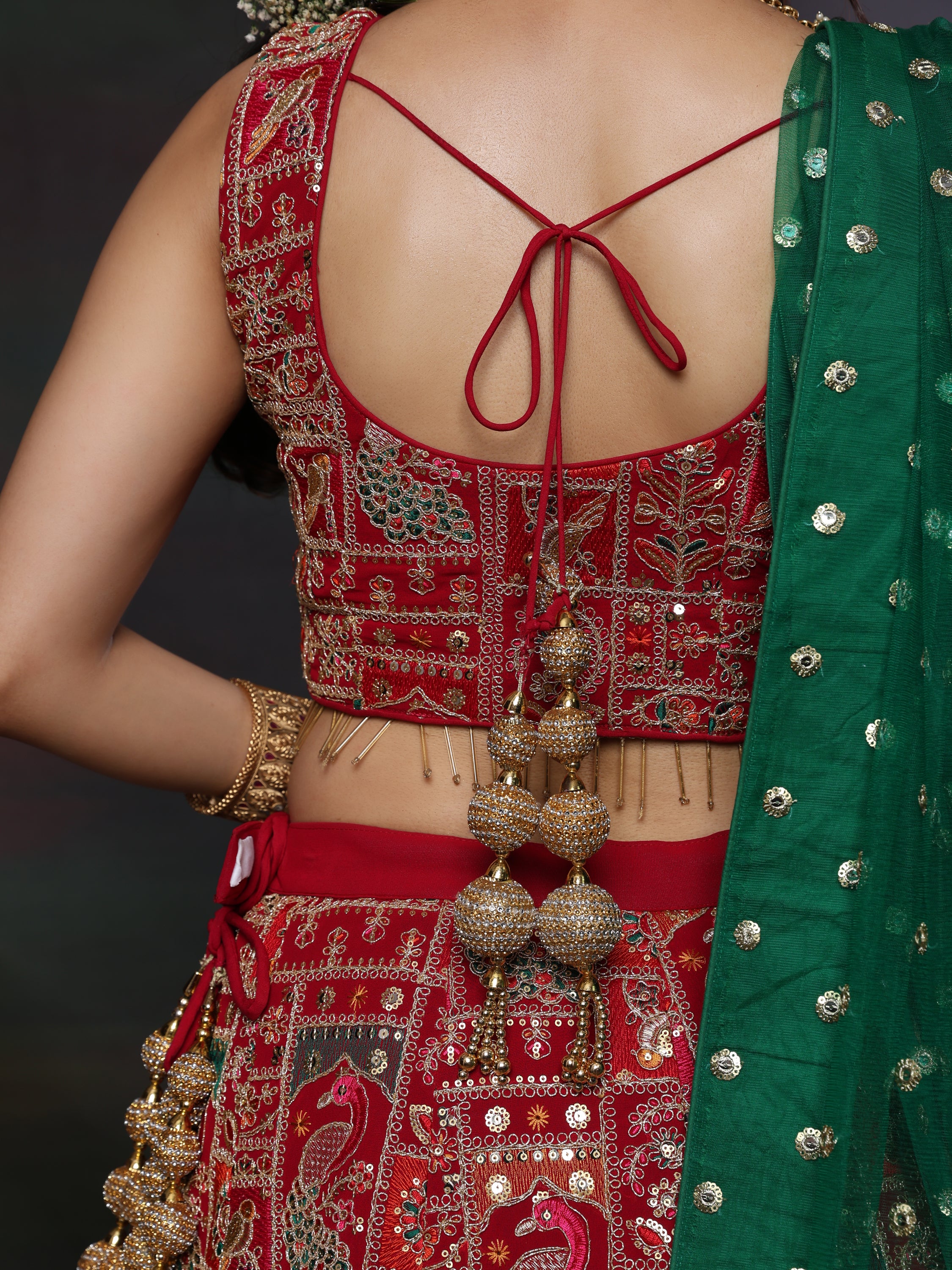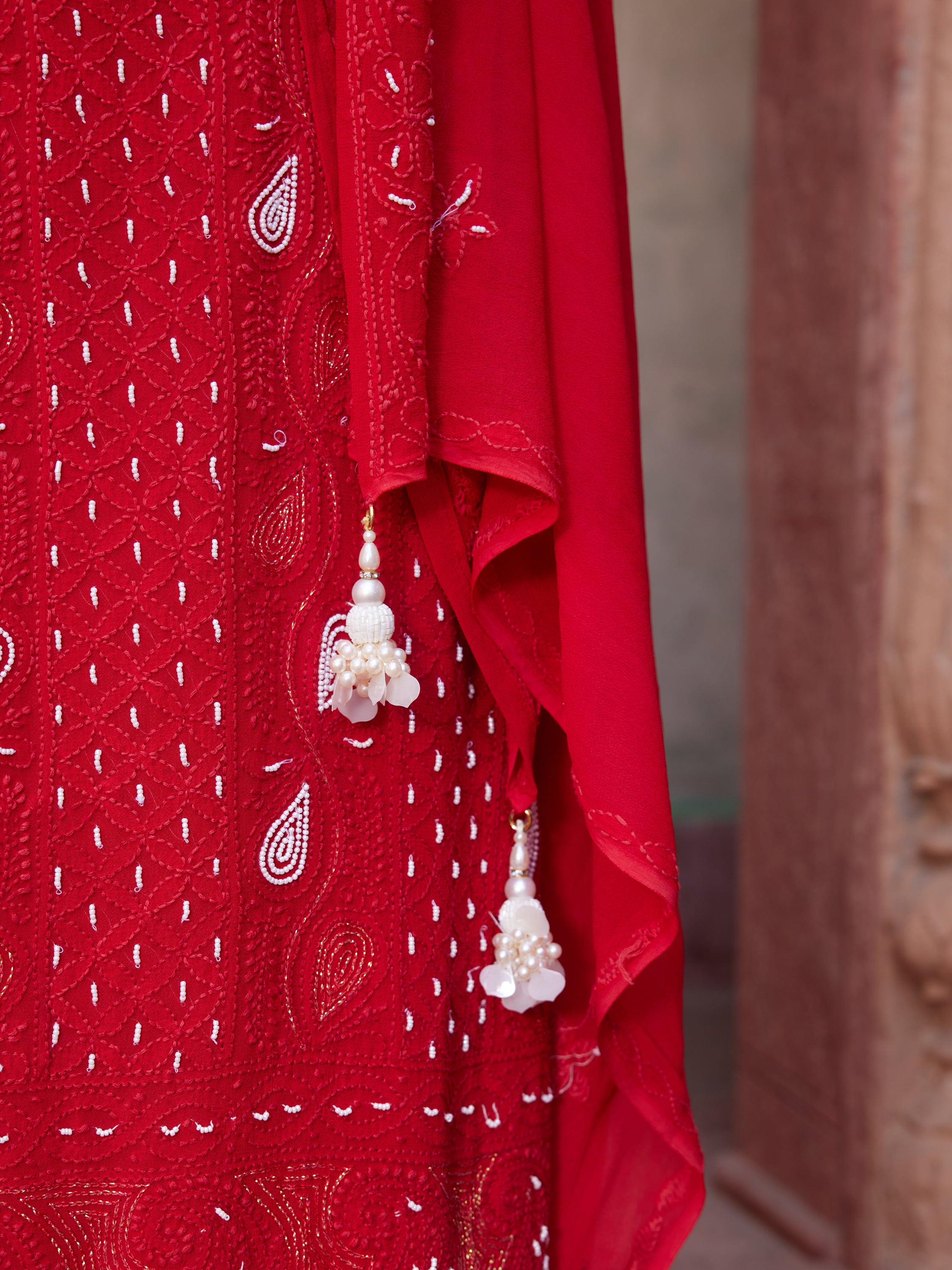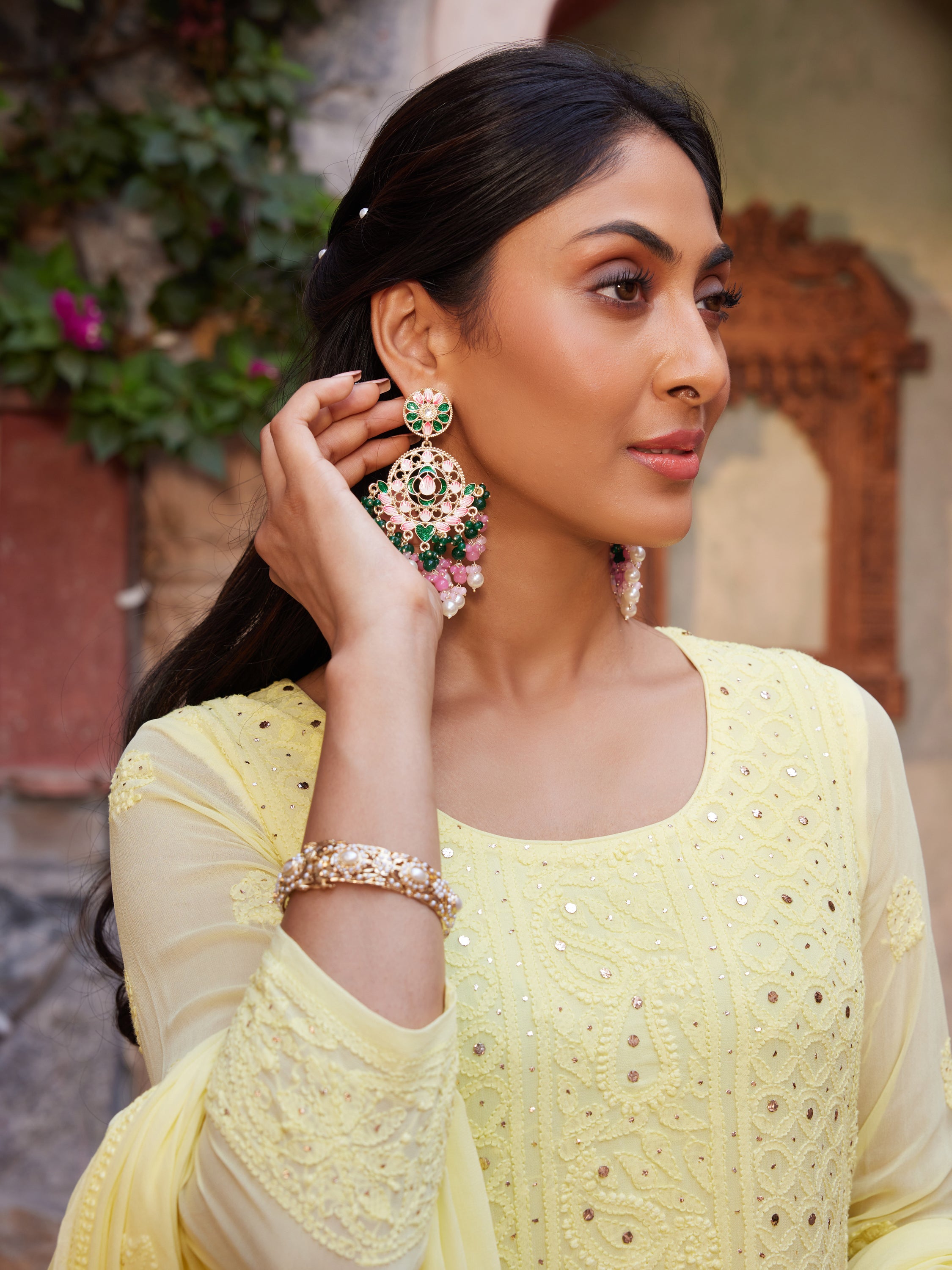Types of stitches: Chikankari stitches and its timeless charm
 Chikankari, a beautiful and intricate form of embroidery, originates from the heart of India, Lucknow. It's a craft that has been passed down through generations and is known for its intricate designs.
Chikankari, a beautiful and intricate form of embroidery, originates from the heart of India, Lucknow. It's a craft that has been passed down through generations and is known for its intricate designs.
How many stitches are there in Chikankari?
There are about 32 stitches in chikankari that makes the art held together.What makes it truly special are the various types of stitches used to create these stunning patterns. Let's explore some of the most common ones
Tepchi (Running Stitch):
This is the foundation of Chikankari stitches. It involves simple, straight stitches that create fine lines or borders. Tepchi is used to outline the design before filling it with more complex stitches.
Bakhiya (Shadow Work):
Bakhiya is all about creating a shadow effect. It's done by filling the inside of the design with tiny stitches on the reverse side of the fabric. This technique gives Chikankari its distinctive 3D appearance.
Hool (Eyelet Hole Stitch):
Hool is all about creating small, neat holes within the fabric. It's often used to create intricate patterns, especially in the center of flowers or other design elements.
Zanzeera (Chain Stitch):
Zanzeera is similar to the chain stitch. It creates a raised, textured effect and is commonly used for making flower petals or vines in Chikankari.
Phanda (French Knots):
Phanda is all about creating small, round knots on the fabric. These knots can be used to highlight specific areas of the design and add depth and texture.
Murri (Seed Stitch):
Murri involves creating tiny, seed-like stitches in a millet type arrangement. It's often used to fill in the smaller spaces within a design.
Jali (Net Stitch):
Jali creates a net-like pattern by creating small, square or diamond-shaped holes within the fabric. It's a highly intricate and time-consuming stitch.
Keel Kangan Stitch:
Keel kangan stitch is used to fill in larger areas of a design with smooth, satin-like stitches. It adds a glossy finish to the embroidery.
And many more of such stitches.Each of these stitches plays a crucial role in the creation of Chikankari, and skilled artisans use them to bring intricate patterns to life. From the simplicity of the Tepchi to the complexity of the Jali, Chikankari stitches showcase the craftsmanship and artistry of this embroidery tradition. Take a moment to appreciate the detailed work that goes into every stitch, weaving stories and culture into each design.



